As someone who loves to cook, I also love to freeze food. Even typing that sentence seems like an odd thing to write but there is a pleasure in finding a special ingredient or making a favorite dish and knowing it is available in your freezer.
This is all a wonderful concept until your refrigerator freezer starts making dreadful sounds. There is a panic that set in especially when you think of all your frozen assets.
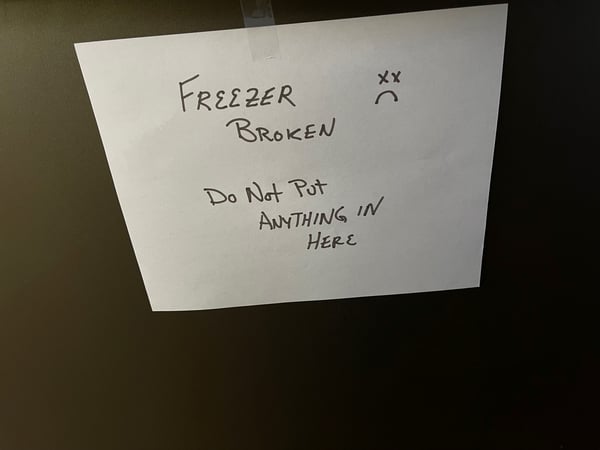
This has been my life for almost two weeks. My new appliance should be here later in the week but meanwhile, I am sitting on the edge of my seat wondering when my freezer is just going to completely stop working.
Luckily for me, it is still ice cold in there but I know I am on borrowed time. This experience of trying to use up all my frozen treasures has opened up my eyes to ways I could be utilizing this piece of equipment better.
Freezer usage isn’t really a topic we often discuss as cooks. I mean for most of us, we plug it in and take it for granted until it breaks down.
The recent surge of food costs has me rethinking how to store my edible investments.
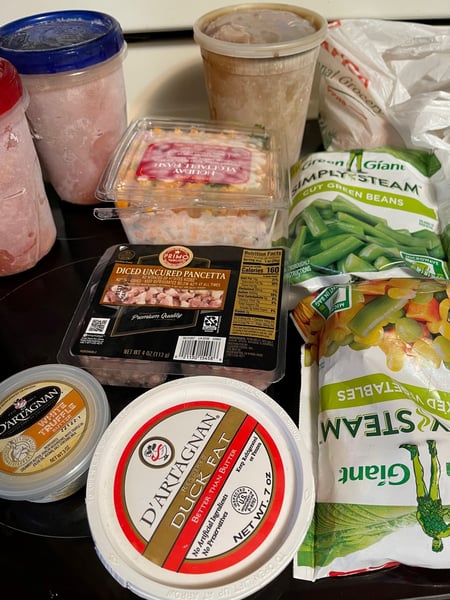 Tip of the iceberg!
Tip of the iceberg!
Temperature
Generally, we think if the food is frozen then our freezer must be cold enough. The golden standard is to keep your freezer temperature at 0 degrees Fahrenheit.
It sounds obvious but make sure you read your manual. Every model has a different dial to set temperature. On average, the lower number is the coldest but you don’t necessarily have to keep your freezer pushing to keep up to that expectation.
Sometimes the lowest setting makes your machine work harder not smarter.
Appliance thermometers are inexpensive and a great way to keep tabs on your freezer temperature.
A filled freezer is most efficient, but you don’t want it so crammed with goodies that air can’t circulate.
Never put warm foods straight in the freezer. It is best to chill them down in the refrigerator first. Warm foods placed directly in the freezer risks increasing the overall temperature and causing some of the already frozen items to thaw out unsafely.
Location, Location, Location
Not every freezer is the same. There are chest freezers, side freezers, top freezers and bottom freezers. Most manuals can direct you to the coldest section. There is plenty advice out there for where to place your items but only you know your habits.
Putting the ice cream in the bottom middle part of the freezer serves no purpose if it is buried under last Thanksgiving extra turkey. (I’m kidding, who forgets about ice cream?!)
A better example is something like frozen fruit you may buy for smoothies. You are more likely to make that smoothie part of your routine if the frozen fruit is easier to access. (The Chopping Block has a timeless smoothie post if you need some motivation other than your freezer breaking.)
Technically, the one rule of thumb to always follow is to keep your meat/fish/poultry items on the lowest shelf. The goal is to eliminate cross contamination if the package happens to have any sort of meat “juice” on it or if it might leak while freezing all the way.
My other big freezer goal is to keep “like” items together. It is just easier to know what you have and what you need.
Storage
If you go online, there are hundreds of options for freezer storage bins. I like bins for small items like cubes of herbs that I saved in an ice tray or some extra fancy compound butter I may have leftover.
And since we talked about meat safety, a bin is a great option to store meat. I also use a lot of the smaller reusable grocery bags in my freezer. They are more flexible, easier to pull and there are no small cracks that may result in product loss.
Labels
Remember to label everything with an item name and date as you put it in the freezer. I keep a black sharpie marker by my freezer so I almost always label everything. (And I forgive myself when I forget.)
Use sticky labels with caution. If they fall off, you are out of luck.
Dates are useful if you tend to buy a lot of one item each time you got to the store. You want to remember to rotate your stock.
Be consistent when you date items. Ideally, it is best to write both the date purchases on the package and the expiration date.
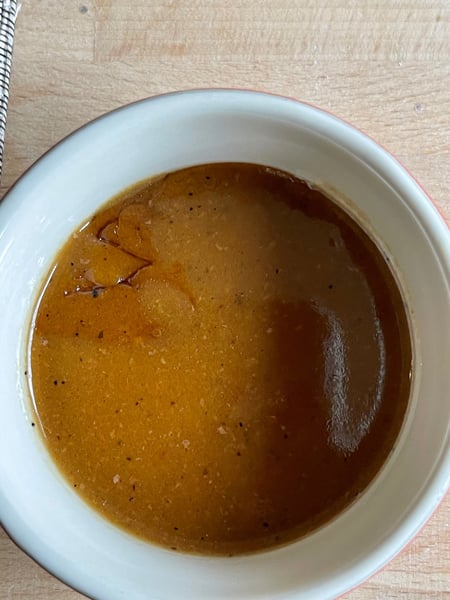 This was not labeled. Gravy?
This was not labeled. Gravy?
Wipe off boards on the side of a freezer are nice reminders if you are inclined to keep an inventory or if there is a specific item you want to use before a certain date.
Also, consider utilizing the “note” section on your phone. It is a great way to know what you already have at home especially when there are good stock up prices. It is only a bargain if you have room for it.
Wrapping Rules
Your goal is to wrap anything that goes in the freezer airtight. This will help you avoid freezer burn and preserve your flavors and textures better upon thawing.
I like to buy the gigantic food service wrap from our restaurant supply store. It really pulls food together tightly and allows me the luxury of making sure every corner is covered.
When freezing, meat in my house is always pulled off any trays. Besides being bulky, it is virtually impossible to cover every corner of meat. This air space allows more room for ice crystals to form which will inevitably change the flavor of your food.
I do always cut the label off the original package and I place it in the packet I wrap. It is not only a great reminder of what you buy but the weight of the item.
Consider also freezing in smaller portions. This allows you the flexibility to thaw only the amount of food you want to eat. Thawing and refreezing should never be an option.
Flat Freezing
When possible, wrap flat. Using a quality sealable bag, things like broths and gravies can be frozen flat.
All you have to do is fill the freezer bag to almost full. The room you leave on the top allows for the natural expansion of the food as it freezes. This is most important for liquids or anything that may have a higher water content. Remember, liquids expand.
Seal it and check it twice!
Place the filled bag on something like a jelly roll pan so it is lying down and place the entire pan in the freezer. Once the bag is fully frozen, remove the bag from the pan and store it in the freezer horizontally or vertically.
Flat freezing is pretty easy on items that aren’t liquid too!
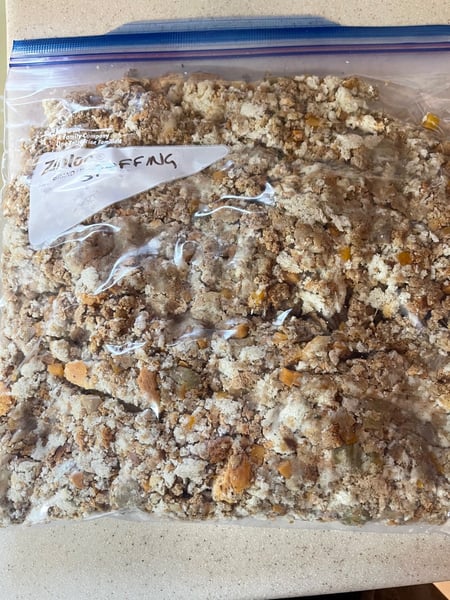
Thawed out stuffing that was frozen flat.
Food to Freezer
Just remember not everything is meant to be frozen. The FDA has a great guideline on freezer time tables. I keep a copy of this in my kitchen as a quick reference.
When you safely thaw an item out in your refrigerator, make sure you look it over for discoloration and odor. Sometimes good food just doesn’t survive. And like Elsa said in the movie Frozen, “Let it go.”
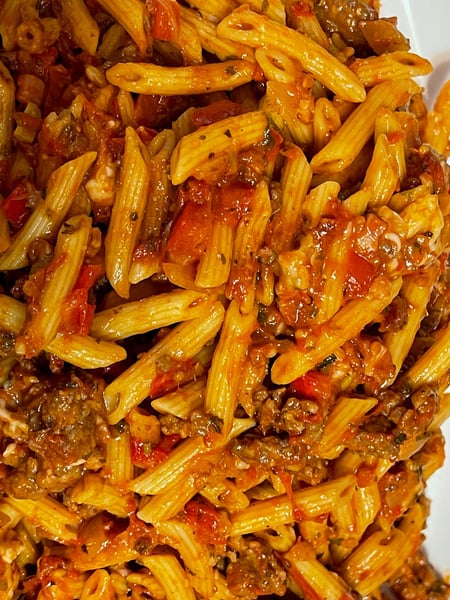
Sauce was frozen…pasta was not.
Finally
Empty your freezer every now and then to give it a good cleaning. Appliances of today don’t require defrosting as much as the older models but it is a good practice to empty, wipe, check inventory and reload.
We are approaching farmer’s market season in the Midwest. The freezer is a great way to preserve the seasonality of your favorite food items.
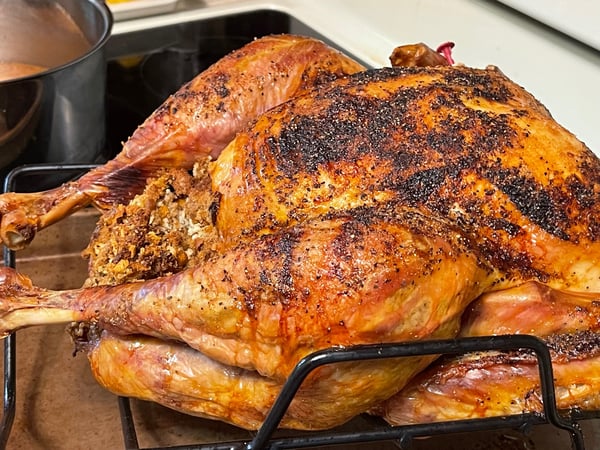
My bargain turkey that I bought after last Thanksgiving finally got cooked.
Please share your own personal freezer success (or horror) stories on The Chopping Block's private Facebook group, and if you aren’t already a member, join now. I will definitely will share a picture after my new appliance arrives Wish me luck!











